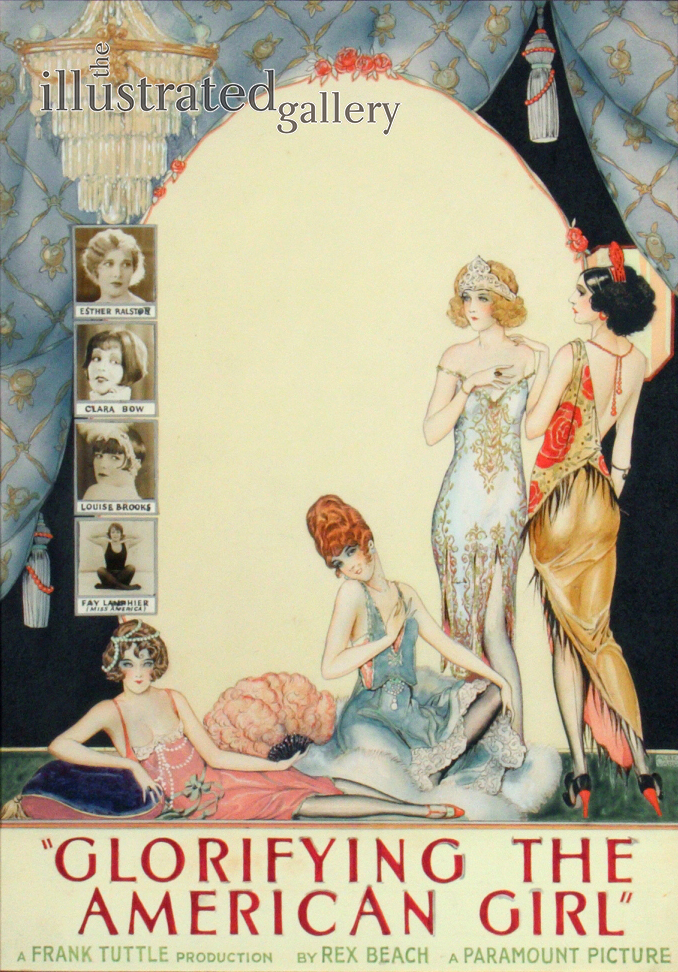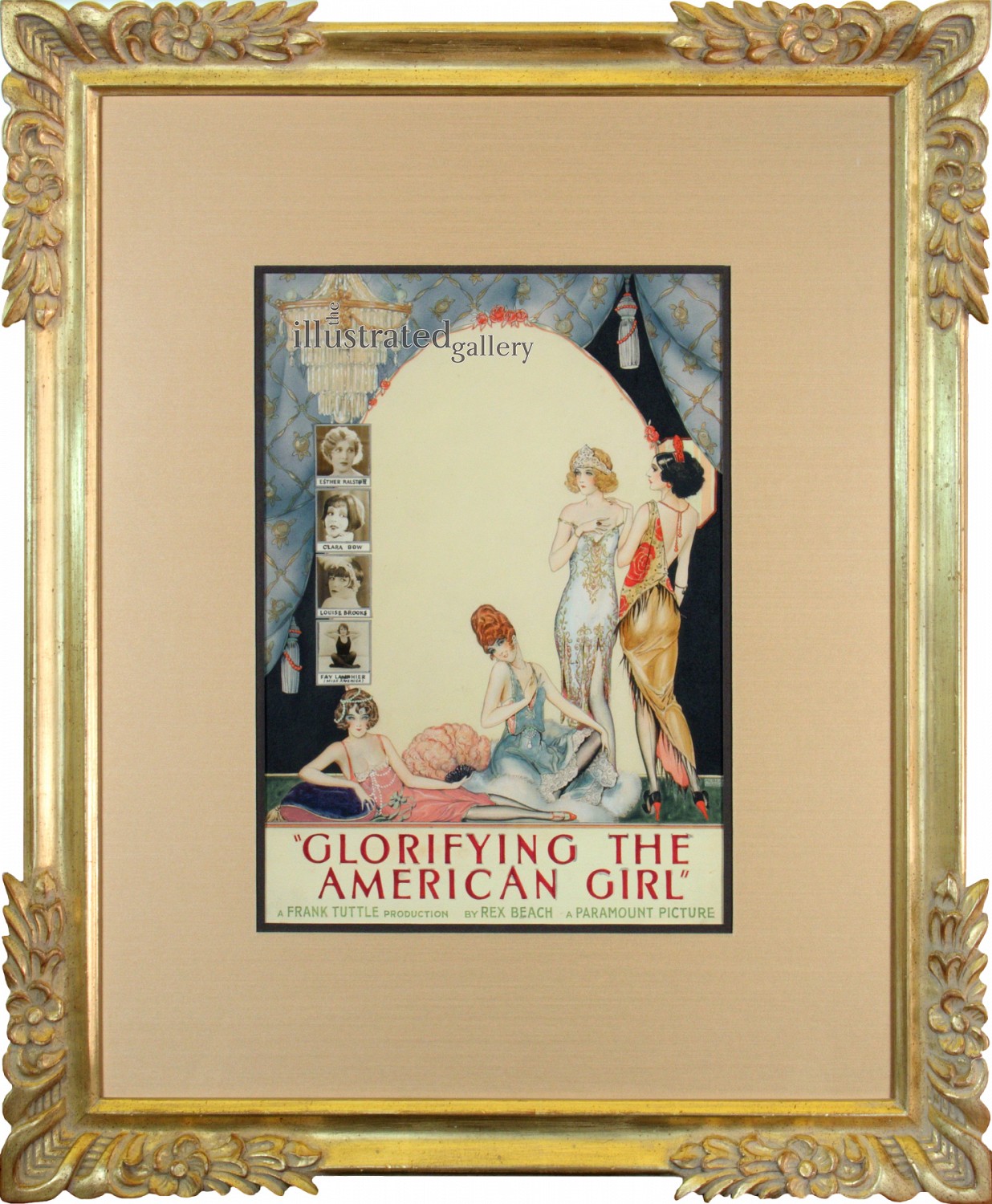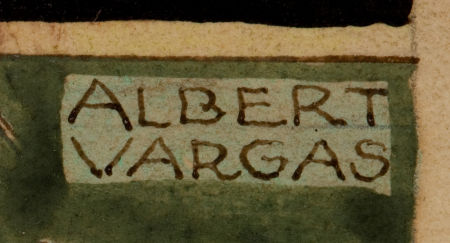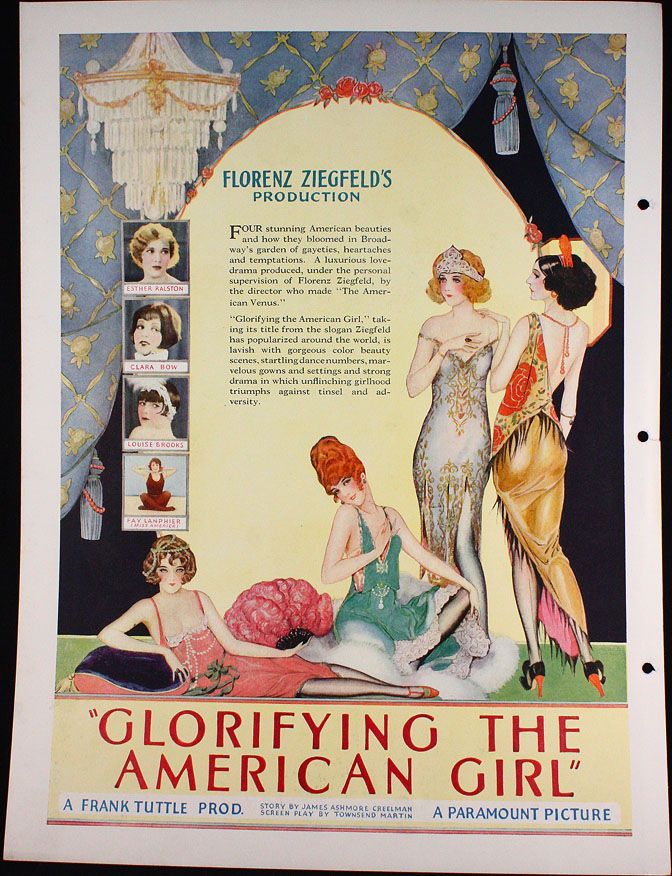"Glorifying The American Girl" Lot no. 1028
By Alberto Vargas 1896-1982
1926
16.00" x 12.00", Framed 26.00" x 22.00"
Watercolor, Ink and Appliqués on Board
Signed Lower Right
REQUEST PRICE
PURCHASE REQUEST
Preliminary Press Book Poster Illustration
Original preliminary Paramount Pictures exhibitors press book poster for the unfinished 1926 version of Florenz Ziegfeld's Glorifying the American Girl.
This painting was reproduced as figure 20 in The Great American Pin-Up by Charles G. Martignette and Louis K. Meisel, Taschen, 1996
Explore related art collections: Poster Illustrations / Books / Fashion / Women as Subjects / Pin-Ups & Nudes / Advertisements / $20,000 - $50,000 / Newly Researched
See all original artwork by Alberto Vargas
ABOUT THE ARTIST
Born Joaquin Alberto Vargas y Chavez, Alberto Vargas was a native of Arequipa, Peru, where his father was a professional photographer. After a few months of art training in Paris and his discovery of the nudes of Ingres and the sensual illustrations of the Austrian artist Raphael Kirchner, Vargas found his own direction. Simply put, it was not to make drawings and paintings of “perfect” women, clothed or not. Rather than returning to Peru, he came to New York in 1916 where he found work in a variety of low-paying art jobs. Meanwhile, he made samples of his dream girls. These were shown to the theatrical producer Florenz Ziegfeld, and resulted in his twelve-year association with the “Ziegfeld Follies,” drawing glamorized portraits of the show girls. This was followed in 1934 with similar contracts in Hollywood with Fox Studios and then Warner Brothers.
With the Depression still on and work becoming scarce, Vargas returned to New York and was signed up by Esquire magazine to replace the famous George Petty, then having a contract dispute with publisher David Smart. Vargas became an instant hit and Smart, determined to avoid another dispute with a prima-donna artist, induced the naïve Peruvian to sign a long-term contract that made him a virtual art slave, in which he even ceded the copyright of his name (Americanized by Esquire to “Varga”). A decade after the contract finally expired, Vargas found a haven with Playboy, and an amicable sixteen-year relationship which made Vargas famous with a new generation of readers. Over his lifetime, Vargas’s pin-up pictures were reproduced in uncountable millions. During World War II, they were a favorite with GIs, and his picture adorned innumerable footlockers, ships and planes as well as playing cards and calendars.
An excellent biography of the artist by Reid Austin was published in 1978.







